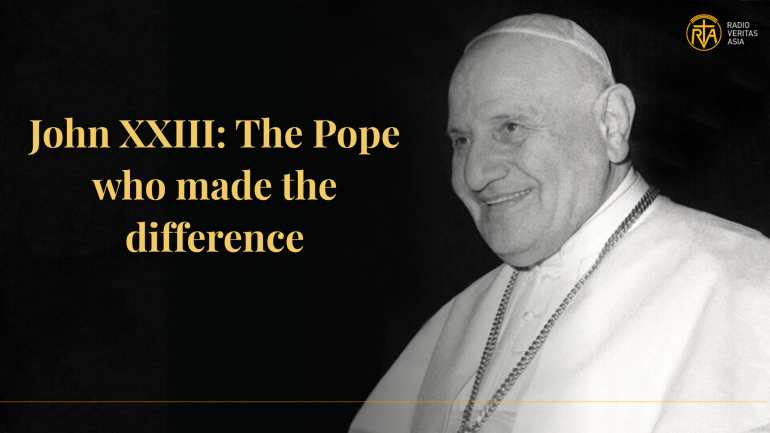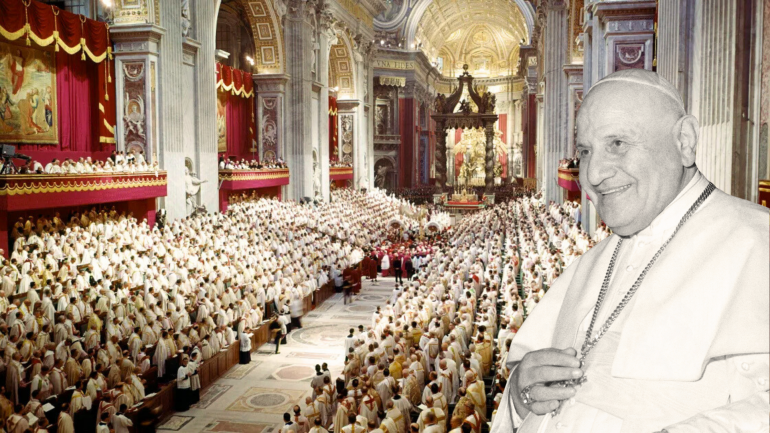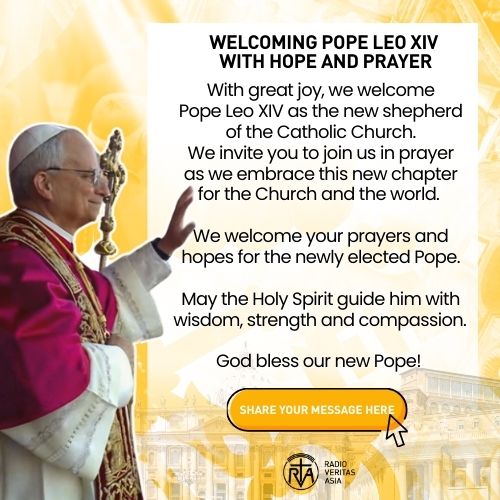John XXIII: The Pope who made the difference

Sixty-three years ago, on October 11, 1962, Pope John XXIII opened the historic Second Vatican Council, fully convinced that it was time to “throw open the windows of the Church and let the fresh air of the Spirit blow through.”
By convoking the Second Vatican Council, Pope John XXIII sent an unequivocal message not only to the Church but also to the entire world that he was a Pope who was going to make a difference. He did so in several impactful ways. He inaugurated a new era in the history of the Church through his openness to change. He had the prophetic courage to read, understand, and respond to the signs of the times. He wanted the entire Church to do likewise.
‘Opening windows’ is, in most cases, child’s play. But often, windows that have not been opened for a long time get jammed, the latches and bolts rust, and cobwebs, dust, and grime accumulate. The room for which the windows are meant becomes musty, the air almost putrid, and something urgently needs to be done: the windows have to be opened by an expert window-opener, who must be called in immediately! Pope John XXIII was just that. He saw a Church that had become comfortable and stagnant.
He saw the need for change and envisioned a Church that, in the words of Gaudium et Spes, would be where “the joys and the hopes, the griefs and the anxieties of the people of this age, especially those who are poor or in any way afflicted, are the joys and hopes, the griefs and anxieties of the followers of Christ. Indeed, nothing genuinely human fails to raise an echo in their hearts.” Above all, he was determined to allow the gifts of the Holy Spirit to permeate the Church and radiate throughout the world.
Pope John XXIII was elected Pontiff on October 28, 1958, on the twelfth ballot, at the age of 76. Apparently, he was a compromise candidate, and given his age, many regarded him as a ‘caretaker’ Pope. No one expected him to initiate a revolution in the Church. On April 27, 2014, he was canonized a saint by Pope Francis. In his homily on that occasion, Pope Francis said, “In convening the (Second Vatican) Council, John XXIII showed an exquisite openness to the Holy Spirit. He let himself be led, and he was for the Church a pastor, a servant-leader. This was his great service to the Church: he was the Pope of openness to the Spirit.”
The feast day of a saint in the Catholic Church is traditionally observed on the anniversary of the saint’s death (birth into heaven), or, in rare cases, on their birth anniversary. In exceptional cases, another day is assigned. It is significant, therefore, that the Catholic Church celebrates every year the Feast of St. Pope John XXIII on October 11, the day he began the Second Vatican Council. A memorable day indeed, both for the Church and for the world!

Six months after inaugurating Vatican II, and literally in the midst of it, Pope John XXIII shook the foundations of the earth on 11 April 1963 with his incisive and far-sighted encyclical Pacem in Terris (Peace on Earth). This was the last encyclical he gave to the Church; it was also the very first encyclical by any Pope to be addressed “to all men of goodwill.” It was written in the context of the turbulence and conflict that had seized several parts of the world, the Cold War, the erection of the Berlin Wall, and the Cuban Missile Crisis.
Vatican II and his path-breaking encyclical are like two sides of the same coin. The Church and the world are inseparable; both need opening up and a thorough cleansing! Pacem in Terris has a more elaborate title: “On Establishing Universal Peace in Truth, Justice, Charity, and Freedom.” These four pillars, Truth, Justice, Charity, and Freedom, are, in a sense, the sum and substance of the encyclical. It observes that real peace must be based on an order “founded on truth, built according to justice, vivified and integrated by charity, and put into practice in freedom.”
Through the Vatican Council, Pope John XXIII sought to make the Church more open, transparent, and participative. This wish is indirectly reflected in his encyclical, in which he makes human rights paramount, saying that peace is possible only when the rights of every human being are respected. In Pacem in Terris, Pope John XXIII reminds all people of goodwill (and particularly Catholics) to be more engaged in social and political life, to take a visible and vocal stand for human rights, and to help build a more humane, just, and peaceful world.
What comes across powerfully today is how truly prophetic Pacem in Terris was. The very realities to which it drew attention are still painfully prevalent in our world today. War (in Gaza and Ukraine) and violence, ethnic and religious strife, have caused untold destruction of life and property in many parts of the world. Millions have sought refuge in other countries, and many more are internally displaced. Consumerism, the ills of globalization, and the lack of concern for our common home have fragmented the earth as never before. The nuclear threat continues to loom large. Some divisive leaders are even determined to build new walls to keep out migrants.
Pope John XXIII proved to the Church and to the world that he was a Pope who made a difference. It was a time when a good pastoral and professional “window-opener” was the need of the hour. Pope John XXIII fulfilled that mission in many ways, making Truth, Justice, Charity, and Freedom the fundamentals of a more transparent Church and a more peaceful world.
As we celebrate the memory of this beloved saint-pope, let us pray that the spirit and message of Vatican II and Pacem in Terris may profoundly touch those in the Church and all “men and women of goodwill” everywhere today.








